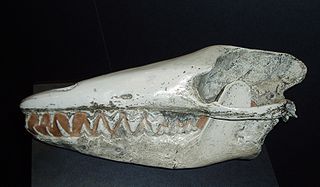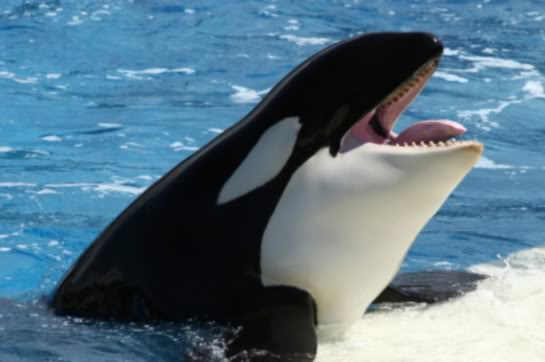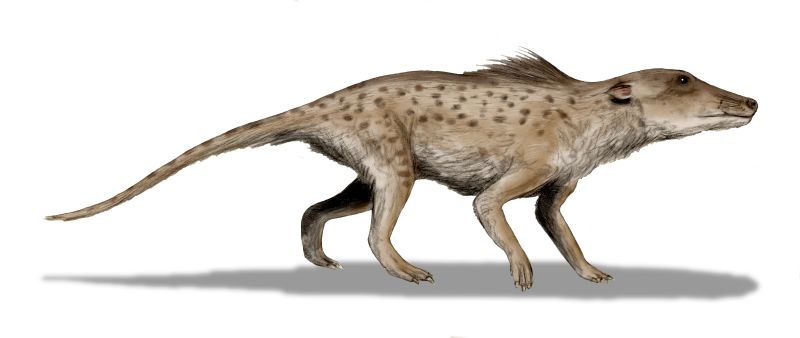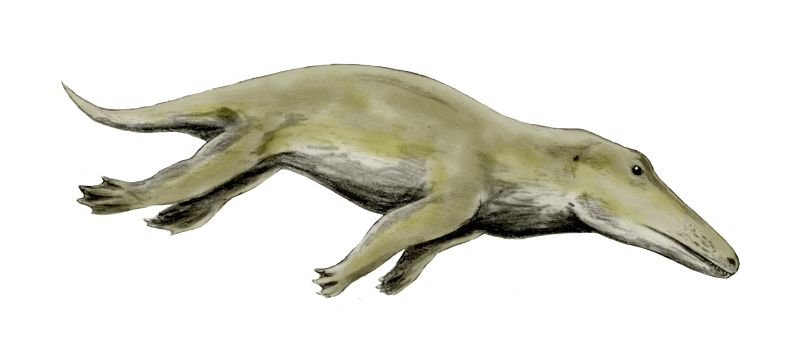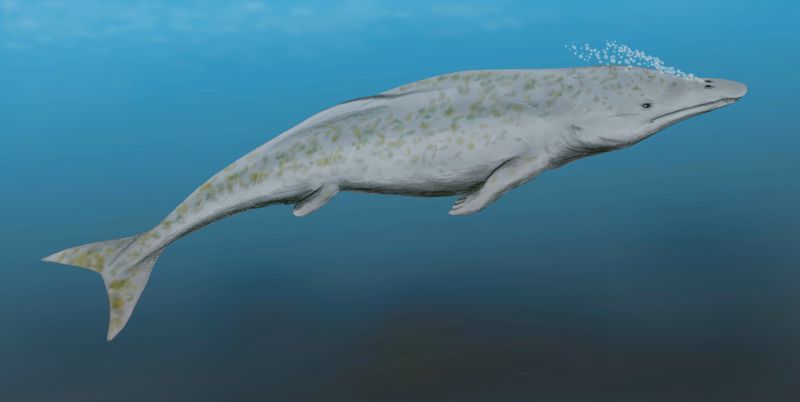Yes it was,
About Pakicetus:
If you happened to stumble across the small, dog-sized Pakicetus 50 million years ago, you'd never have guessed that its descendants would one day include giant sperm whales and gray whales. As far as paleontologists can tell, this was the earliest of all the
prehistoric whales, a tiny, terrestrial, four-footed mammal that ventured only occasionally into the water to nab fish (we know that Pakicetus was largely landbound because its ears weren't well adapted to hearing underwater). Over the next 10 or 20 million years, the limbs of Pakicetus' great-great-great, etc. grandchildren gradually evolved into flippers, and the whale lineage was launched in an irreversibly aquatic direction. (By the way, Pakicetus wasn't the only walking whale of its day; its close relatives on the Indian subcontinent included
Ambulocetus and
Indohyus.)
Pakicetus About.com Prehistoric Mammals
Evolutionist have used the bone structure and anatomy of animals to link them through similar features. They are relying on visual observations though the fossil records of a creature and comparing that to other extinct and living species to connect them. But sometimes even though they have similar features the DNA evidence doesn't link them.
"What Thewissen is saying is that Indohyus is the closest relative of whales - and we agree. Where we think he is wrong, is that he is saying that that hippos are more closely related to true pigs than they are to whales," says Theodor. "This contradicts most of the data from DNA from the last 12 or 13 years. Those data place hippos as the closest living relative to whales."
She says Thewissen did not use DNA evidence, instead used fossil evidence alone to create a family tree and reach the conclusion that hippos have more in common with pigs than whales.
"And the reason their tree is so different is simple: by excluding all the DNA information they left out all the data that shows a strong relationship between whales and hippos."
Before the widespread use of DNA data, hippos had been thought to be closely related to pigs, but DNA data show that whales are closely related to hippos. Geisler and Theodor argue that leaving out the DNA data not only ignores important information, it implies that the evolution of swimming evolved independently in hippos and whales, when it may have evolved only once in a common ancestor.
Is The Hippopotamus The Closest Living Relative To The Whale?
Even though Pakicetus has some similar features to the whale it doesn't mean they are definitely connected by the DNA. Unfortunately we cant check that but as the link shows some scientists have got it wrong. They have based the connection oh the look, shape and similar features which showed they should be linked and the DNA showed otherwise.
The other thing is they dont show many transitions from Pakicetus to the whale. Pakicetus lived about 50 million years ago and is about as big as a wolf. You have a few species after that at around 10 to 15 feet. Then came the LIanocetus which was about 30 feet. It was the first that was fully whale with baleen and no rear legs. It was around about 34 million years ago. Considering a modern blue whale are about 98 feet long and weight 170 tonnes there seems to be some big gaps.
There would have to be a lot of transitions as just the size along. As a mother could not give birth to an offspring that would be to big it would have to have taken many transitions maybe 100 or more. I also find it hard to see how complex sonar ability could evolve by a mutation. How does a creature know it needs sonar and how does a chance mutation even know how to develop that.
How do we know that the Pakicetus just happened to have some similar features to the whale and was its own species that died out and the whale evolved in the sea. The Pakicetus also had similar features to goats and deer such as its hoofs and a inflated auditory bullae or shape of its ear bones as well. So maybe it was a land animal.
As i said before even though it had some similar features DNA testing has shown that this alone is not necessarily proof that they are linked.




